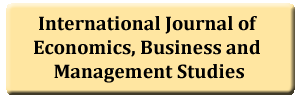Accounting Economic Growth Differential of Indian States
DOI:
https://doi.org/10.55284/ajssh.v7i2.798Keywords:
Factor share approach, Growth accounting, Kendrick index, Perpetual inventory method, Solow index, Total factor productivity, Trans log index.Abstract
This paper uses a combination of Growth Accounting Analysis and Regression Analysis to examine the economic growth experience of twelve major Indian States – six high-income and industrially developed; and six low-income and industrially underdeveloped, over the period 2000-21, through the decomposition of the total factor productivity in major sectors of the economy. The performance of the Low Income States has been perceptibly superior to that of the High Income States. All the sectors in each of the two categories of states have undergone a temporal deceleration in total factor productivity growth, thereby pointing toward the ineffectiveness of economic reform measures to induce progress in the states. However, in the overall Indian economy, various sectors (except Secondary and Tertiary-2) experienced productivity improvement over time. Further, total factor productivity contributed the most to output growth during the first decade (2000-01 to 2010-11), while labor acted as a prime mover during the second decade (2011-12 to 2020-21). The total factor productivity growth acted as the major source of economic growth in the aggregated Indian economy and signifies that although liberalization policies have shown desirable results at the aggregated level, there has been a considerable variation in the speed and extent of implementation of the reform measures across the states. Thus, for the states to surge ahead, it is imperative to address regional problems to enhance total factor productivity.




